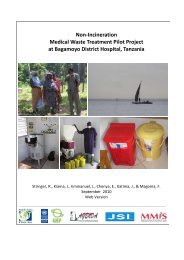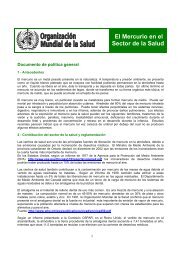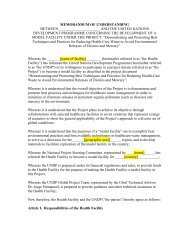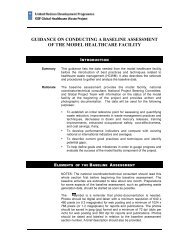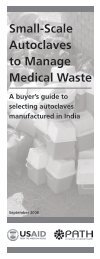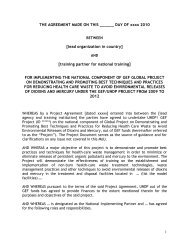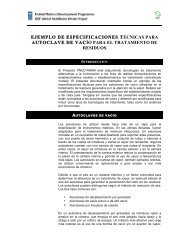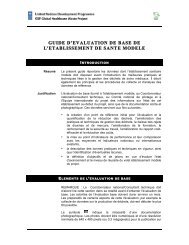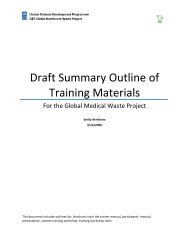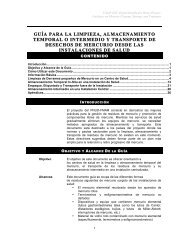Latvia
Latvia
Latvia
You also want an ePaper? Increase the reach of your titles
YUMPU automatically turns print PDFs into web optimized ePapers that Google loves.
Health systems in transition<br />
<strong>Latvia</strong><br />
Patient information<br />
The 1997 Law on Medical Care (articles 20–23) also regulates the patient’s<br />
right to information. A patient has the right to receive clear information about<br />
diagnosis and a plan of examination and treatment, and the right to refuse<br />
examination and/or treatment either partly or completely. The same law also<br />
guarantees a patient’s right to information about quality of care.<br />
In practice, information is provided mainly by the patient’s GP, the SCHIA,<br />
the Ministry of Health and its subordinate institutions, and local governments.<br />
The GP usually serves as a health counsellor, providing advice on the specialist,<br />
hospital or rehabilitation institution that is appropriate to the patient’s needs.<br />
The SCHIA provides information concerning prices of health care services<br />
and the level of the ceiling on co-payments (Section 3.3 Population coverage<br />
and basis for entitlement). This information is distributed to patients through<br />
posters and booklets made available to the territorial branches and in health<br />
care facilities. The Ministry of Health and the agencies under its jurisdiction<br />
provide information on general matters relating to health care, according to<br />
the specific areas for which they are responsible. Finally, local governments<br />
provide information relating to social benefits, such as reimbursements to lowincome<br />
patients for health care services and exemptions from payments for<br />
pharmaceuticals. Some local governments publish newspapers and booklets that<br />
are distributed to their relevant populations free of charge, as well as hotlines<br />
operated by social workers.<br />
In recent years there have been major improvements in the availability of<br />
information through a growing contribution to information dissemination made<br />
by the mass media and the Internet.<br />
There is, however, evidence that there are inequities in access to information<br />
among the <strong>Latvia</strong>n population due to a number of factors, including levels of<br />
income and education, geographical location, language, and the presence of<br />
physical disabilities (Muller et al. 2005). According to a survey published in<br />
2002, 38% of respondents in Latgale (the poorest region of <strong>Latvia</strong>) considered<br />
themselves to be “badly informed” compared to the national average of 31%,<br />
and compared to Vidzeme where the corresponding figure was 24%. Further,<br />
46% of respondents with incomplete primary education felt they were “badly<br />
informed” compared to an average of 31%. In the case of people with physical<br />
disabilities, there is no special information available (Baltic Institute of Social<br />
Sciences 2002).<br />
According to another survey, also published in 2002 (CIET 2002), only 25%<br />
of respondents replied that they had all the information they needed concerning<br />
statutory health care services and provision of medication. Respondents from<br />
<strong>Latvia</strong>n-speaking households felt they were better informed about entitlements<br />
56





